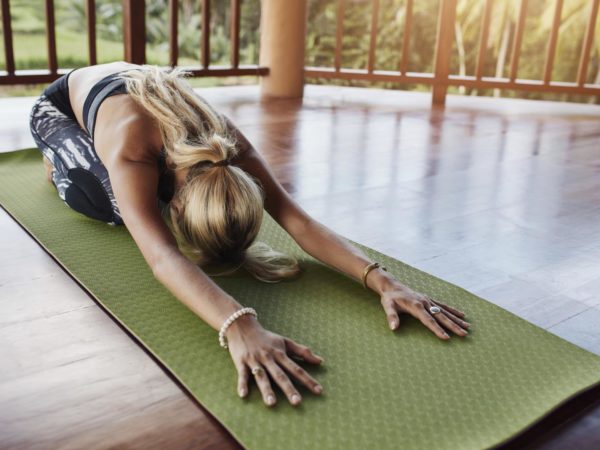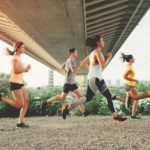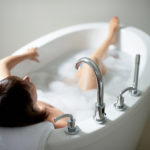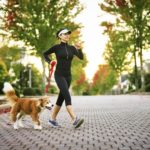Child's Pose

“The Child’s Pose, as the name suggests, can help you release the tension and cares of adult life. I use it to relax and regain my composure between yoga poses.” – Andrew Weil, M.D.
Description & History
The Child’s Pose is often the most recognized and commonly practiced yoga asana, or pose. It is used as a resting pose between other poses. The Sanskrit name of Child’s Pose, Balasana, comes from bala meaning child and asana meaning posture.
In the Child’s Pose, the body rests on the floor in the fetal position with either the arms at the sides of the body or stretched out in front of the body. The head and chest bend between the legs and the forehead rests on the floor. This pose provides beneficial stretching effects on the leg, hip and back muscles of the body.
How to Perform Child’s Pose
- Begin by kneeling on the floor with feet together and knees shoulder-width apart – make sure you are sitting on your heels with hands resting on your thighs.
- Exhale and lay your torso down between your thighs, bringing your chest and head toward the floor. Your forehead should rest comfortably on the floor or mat. Pull your tailbone and head away from each other and imagine you are adding space along the vertebrae in your spine.
- Rest your hands and arms next to your legs on the floor with palms facing up. Release any tension in your shoulders and add space between your shoulder blades.
- Child’s Pose is a resting pose so stay in this pose for 30 seconds to a few minutes. To come out of the pose, lengthen the front of your torso and with an inhalation, engage your core muscles and lift your torso.
- Perform your next yoga pose and return to the Child’s Pose for rest.
Potential Health Benefits
- Stretches and strengthens the thighs and hips
- Releases stress in the back and shoulders
- Provides rest and recovery between yoga poses
Researchers examined the stress-reducing effects of incorporating the Child’s Pose into a yoga routine. Results of the study were published in Psychological Reports. Researchers found that after two 45-minute yoga sessions which included the Child’s Pose as one of the yoga poses, anxiety decreased while performance on a task requiring focused attention increased. The results indicate that Child’s Pose, in conjunction with other relaxing yoga poses, can decrease overall anxiety.
Modifications & Variations
There are two variations of the pose and they both include arm placement. One is placing your arms at the sides of your body with palms facing upward. The other is to place your arms in front of your body along the floor as if you were raising your arms. These two variations can increase the stretching of the legs and back.
The Child’s Pose places pressure and strain on the knees. If you experience knee pain and are unable to perform the pose to the full extent, place a rolled yoga mat or towel between your thighs and calves. This will add a cushion and relieve any unnecessary strain on your knees.
You may place a yoga mat or towel under your knees to relieve and add cushioning for comfort. If you cannot bring your forehead to the floor during the pose, you can add a yoga block to rest your head on to relieve excess strain on your lower back.
Precautions
If you have knee pain or experience knee discomfort during Child’s Pose, either modify it by following the instructions above or discontinue your practice of the pose. If you are pregnant, take caution because the Child’s Pose can place undue pressure on the legs and lower back.
Related Poses
- Hero Pose (Virasana)
- Lotus Pose (Padmasana)
- Corpse Pose (Savasana)
- Legs Up the Wall (Viparita Karani)
Reviewed by: James Nicolai, M.D., on August 1st, 2013.
Sources
Telles, Shirley, Abhishek Kumar Bhardwaj, Sanjay Kumar, Nilima Kumar, and Acharya Balkrishna. “Performance in a Substitution Task and State Anxiety Following Yoga in Army Recruits.” Psychological Reports 110, no. 3 (2012): 963-976.









